Clay pot cooking, an age-old tradition, continues to be cherished worldwide despite the prevalence of modern kitchen appliances. From its ancient roots to its current revival in culinary practices, cooking with clay pots offers a distinct and delectable experience that bridges the past with present-day enjoyment. The use of clay pots ensures gentle and uniform heat distribution, resulting in tender and flavorful dishes. Enhance your cooking experiences by embracing the time-honored method of clay pot cooking and relish the delicious flavors and fragrances it adds to your meals.
Table of Contents
The Basics of Clay Pot Cooking
Clay pots, also known as earthenware or terra cotta pots, have been used for thousands of years. They are made from natural clay, which is then fired at high temperatures to create a durable cooking vessel. These pots come in various shapes and sizes, and their porous nature allows for distinct cooking benefits that set them apart from metal or glass cookware.
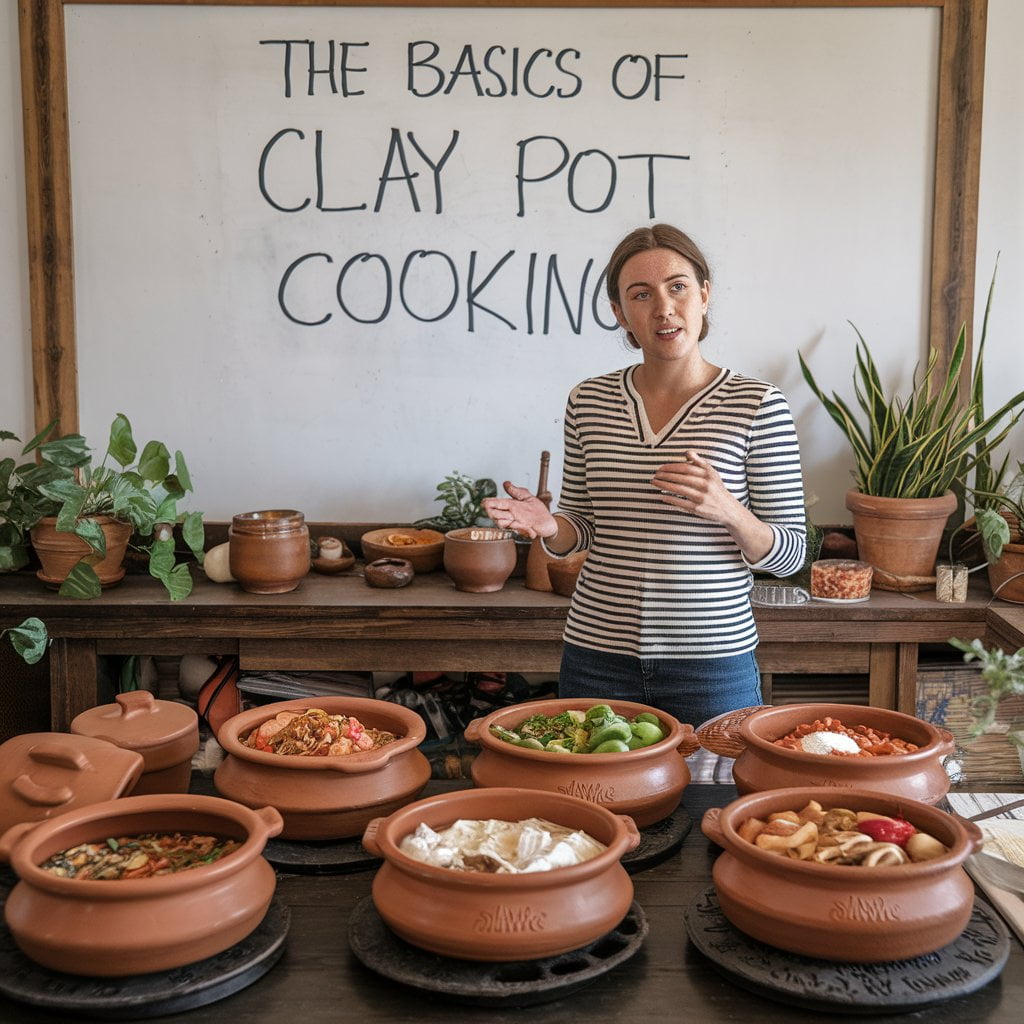
Why Clay Pots?
- Heat Distribution: One of the most notable advantages of clay pot cooking is its superior heat distribution. The porous nature of the clay allows for even cooking, which helps prevent hotspots and ensures that food is cooked uniformly. This even heat distribution is ideal for slow-cooking dishes, allowing flavors to meld beautifully over time.
- Moisture Retention: Clay pots are excellent at retaining moisture. The porous surface of the clay absorbs and then gradually releases moisture back into the food, which helps to keep dishes juicy and tender. This is especially beneficial for cooking stews, soups, and braised meats.
- Enhanced Flavor: Cooking in clay pots often results in a unique flavor profile. The clay imparts subtle earthy notes to the food, enhancing its taste. Additionally, the slow cooking process allows for deeper flavor development, making dishes rich and complex.
Choosing the Right Clay Pot
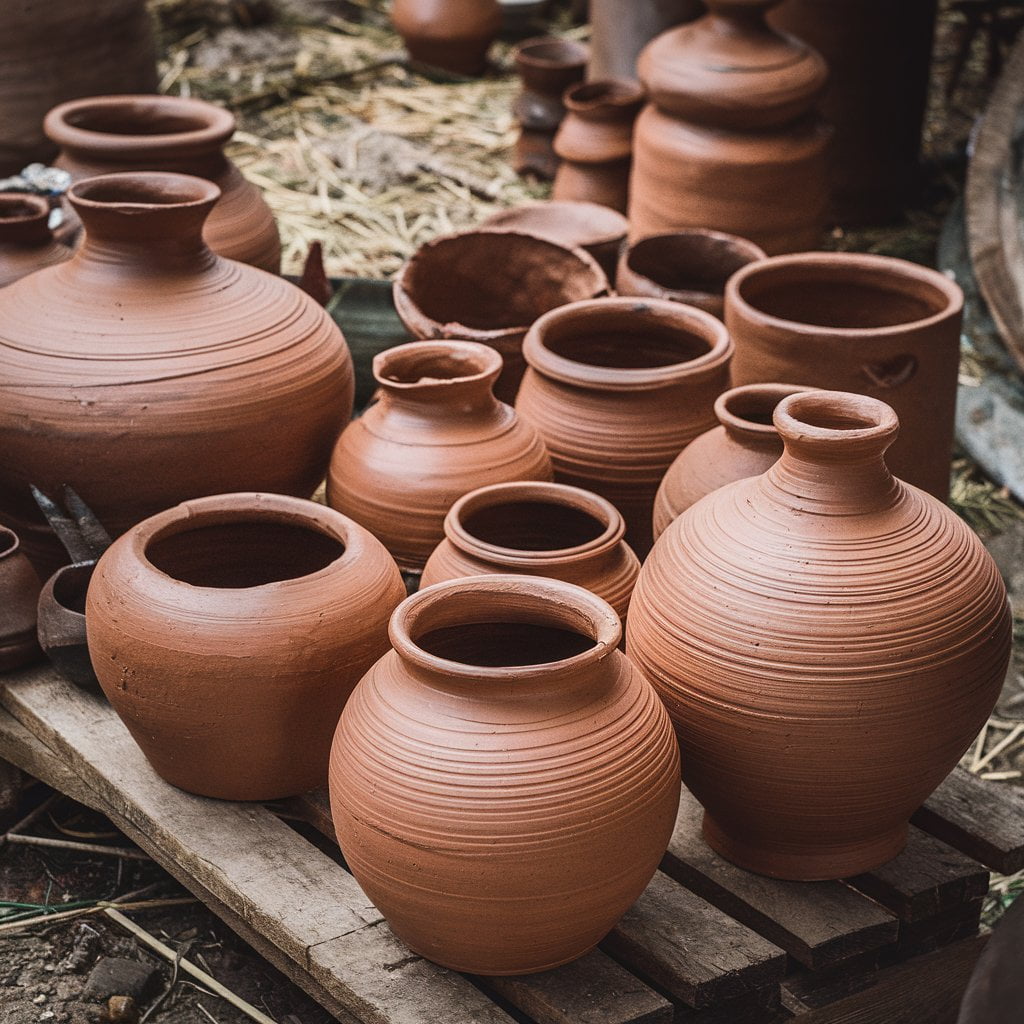
When selecting a clay pot, consider the following factors:
Shape: Clay pots come in various shapes such as round, oval, or even cylindrical. Each shape is suited for different types of dishes. For instance, round pots are ideal for stews, while oval pots are perfect for roasting.
Material: Opt for high-quality, lead-free clay pots. Traditional unglazed clay pots are excellent for slow cooking and baking, while glazed versions are easier to clean and less prone to sticking.
Size: Choose a pot size that fits your needs. Larger pots are great for family meals or batch cooking, while smaller ones are perfect for individual portions.
Preparing Your Clay Pot
Before using your clay pot for the first time, it’s essential to prepare it properly:
- Seasoning: Some clay pots require seasoning to enhance their durability and cooking performance. Soak the pot in water for several hours or overnight, then place it in a cold oven and gradually heat it to a high temperature. This process helps to strengthen the clay and minimize cracking.
- Cleaning: Avoid using soap or harsh chemicals when cleaning your clay pot, as it can absorb these substances and affect the taste of your food. Instead, use warm water and a soft brush or cloth. For stubborn residue, a paste made of baking soda and water can be effective.
Cooking with Clay Pots
Clay pots are incredibly versatile and can be used for a wide range of dishes:
Rice Dishes: Cooking rice in a clay pot yields a fluffy and aromatic result. The even heat helps to cook the rice perfectly, while the pot’s moisture retention keeps it from drying out.
Slow-Cooked Stews and Soups: Clay pots are ideal for making hearty stews and soups. The even heat distribution and moisture retention ensure that your ingredients cook slowly and evenly, allowing flavors to develop and blend perfectly.
Braised Meats: Braising in a clay pot results in tender, succulent meat. The slow cooking process breaks down the connective tissues in meat, making it incredibly tender. Add vegetables and spices to create a one-pot meal that’s both flavorful and satisfying.
Baked Goods: Clay pots can also be used for baking. They are excellent for making bread, cakes, and even casseroles. The even heat distribution helps achieve a perfect crust and a moist interior.
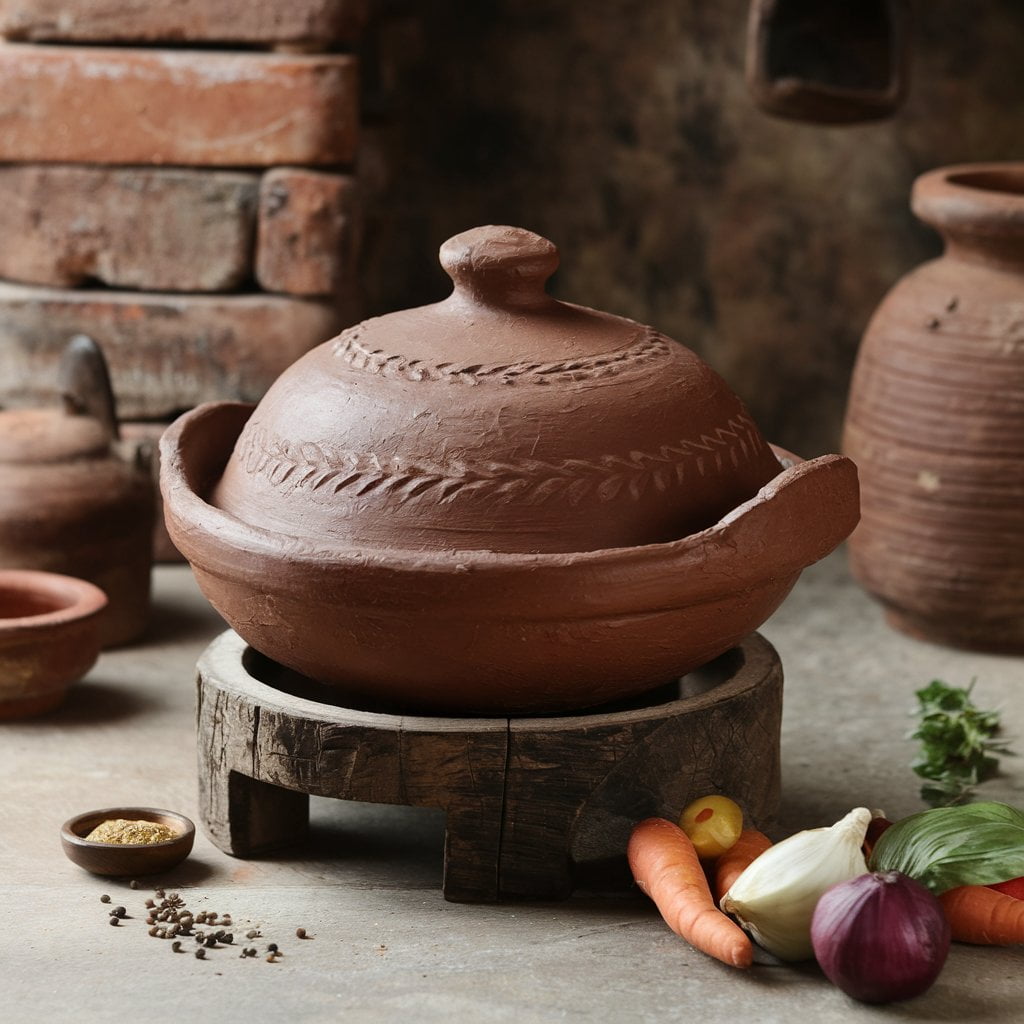
Tips for Successful Clay Pot Cooking
- Avoid High Heat: Clay pots are best used on low to medium heat. Rapid temperature changes can cause the pot to crack. Always start with a cold pot and gradually heat it up.
- Use Proper Utensils: To avoid damaging the pot, use wooden or silicone utensils instead of metal ones. Metal utensils can scratch the surface and potentially cause the pot to crack.
- Monitor Water Levels: Since clay pots retain moisture well, you may need to adjust the amount of liquid in your recipes. Check occasionally to ensure there’s enough liquid to prevent burning.
Satvik Recipes to Try in Clay Pots
Satvik cuisine emphasizes purity, simplicity, and non-violence, often excluding onions, garlic, and heavy spices. Here are a few satvik recipes that shine when cooked in clay pots:
1. Satvik Vegetable Khichdi
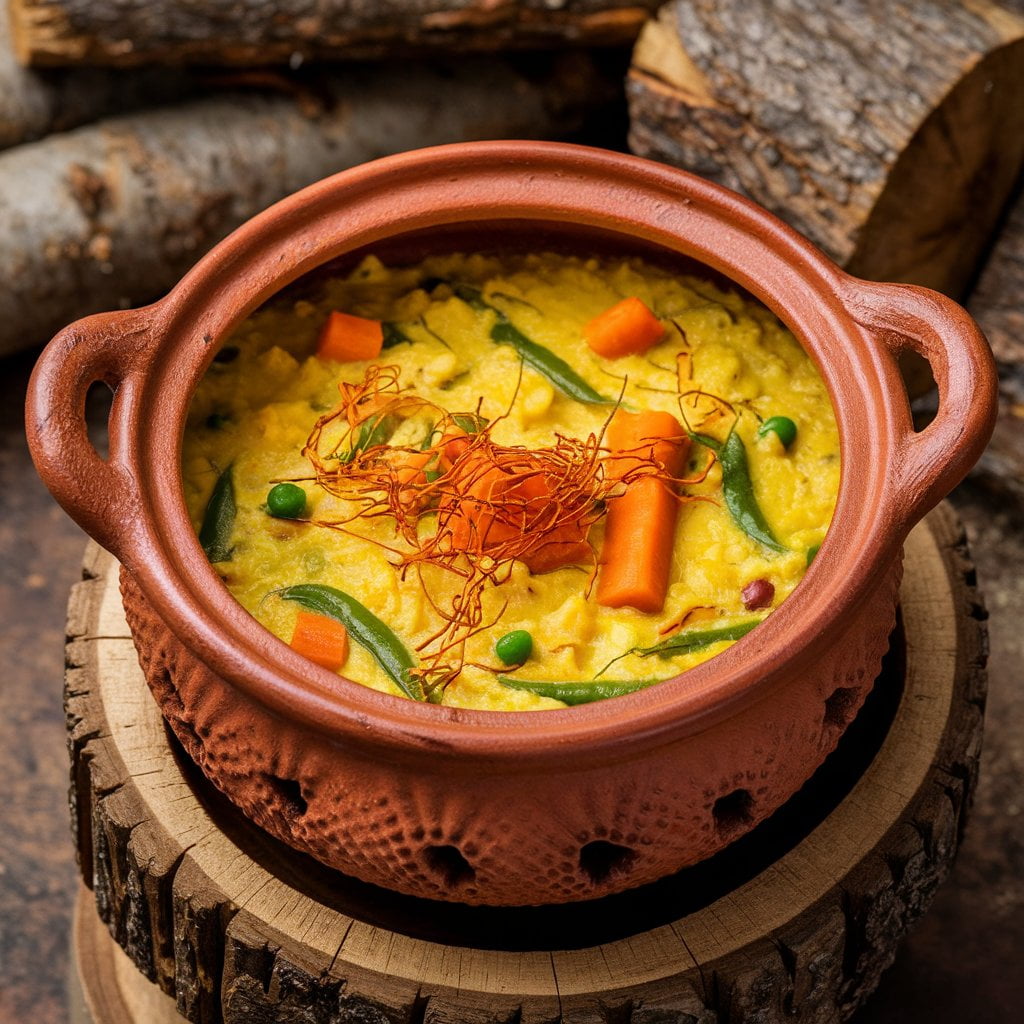
Ingredients:
- 1 cup basmati rice
- 1/2 cup moong dal (split yellow gram)
- 2 cups mixed vegetables (carrots, beans, peas)
- 1 tsp cumin seeds
- 1/2 tsp turmeric powder
- 1 tsp ginger paste
- 2 tbsp ghee
- Fresh coriander for garnish
- Salt to taste
Instructions:
- Rinse and Soak: Rinse the rice and moong dal. Soak them for 30 minutes.
- Cook Vegetables: Heat ghee in a clay pot. Add cumin seeds and allow them to splutter. Add ginger paste and sauté briefly.
- Combine Ingredients: Add chopped vegetables, turmeric powder, and salt. Sauté for a few minutes.
- Add Rice and Dal: Add soaked rice and dal to the pot. Pour in enough water to cover the mixture.
- Simmer: Cover the pot and cook on low heat until the rice and dal are soft and cooked through, about 30 minutes.
- Garnish and Serve: Garnish with fresh coriander and serve hot with yogurt or pickles.
2. Satvik Aloo Gobi (Potato and Cauliflower)
Ingredients:
- Salt to taste
- 2 large potatoes, peeled and diced
- 1 small cauliflower, cut into florets
- 1 tsp cumin seeds
- 1/2 tsp turmeric powder
- 1 tsp coriander powder
- 1 tsp ginger paste
- 2 tbsp ghee
- Fresh coriander for garnish
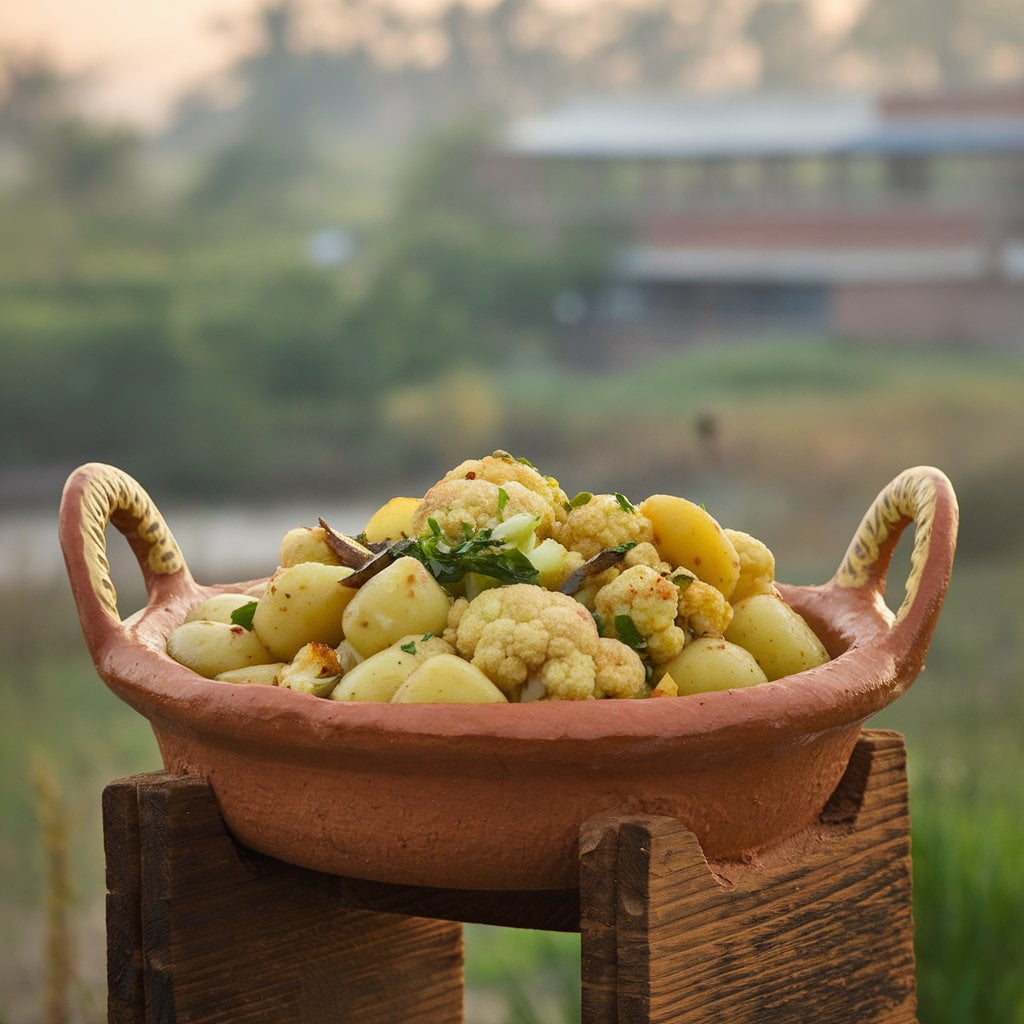
Instructions:
- Prepare Vegetables: Heat ghee in a clay pot. Add cumin seeds and let them sizzle.
- Sauté: Add ginger paste and sauté briefly. Add turmeric powder, coriander powder, and salt.
- Cook Vegetables: Add diced potatoes and cauliflower. Stir well to coat the vegetables with the spices.
- Simmer: Cover the pot and cook on low heat until the vegetables are tender, about 20-25 minutes.
- Garnish and Serve: Garnish with fresh coriander and serve with chapati or rice.
3. Satvik Moong Dal Soup
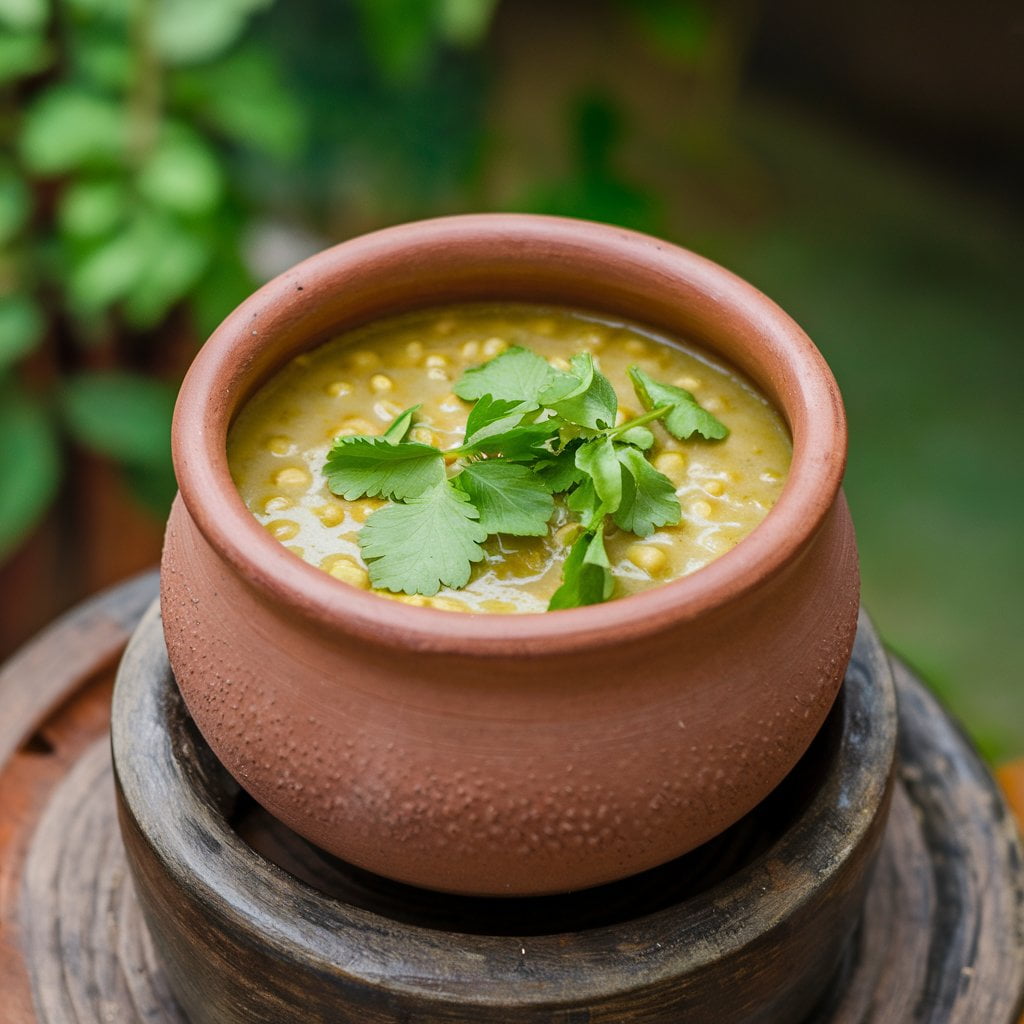
Ingredients:
- Salt to taste
- 1 cup moong dal
- 1 large tomato, chopped
- 1 tsp cumin seeds
- 1/2 tsp turmeric powder
- 1 tsp ginger paste
- 2 tbsp ghee
- Fresh coriander for garnish
Instructions:
- Cook Dal: Rinse the moong dal and cook it in the clay pot with enough water until it becomes soft and mushy.
- Prepare Tadka: In a separate pan, heat ghee and add cumin seeds. Once they splutter, add ginger paste and tomatoes. Cook until the tomatoes are soft.
- Combine: Add the tomato mixture to the cooked dal. Stir in turmeric powder and salt.
- Simmer: Let the soup simmer for 10-15 minutes to blend the flavors.
- Garnish and Serve: Garnish with fresh coriander and serve warm.
Embracing Tradition in Modern Kitchens
Incorporating clay pot cooking into your kitchen routine is more than just a culinary choice; it’s a way to connect with age-old traditions and embrace the natural goodness of food. Whether you’re a seasoned cook or a kitchen novice, experimenting with clay pots can enhance your cooking skills and bring new flavors to your table. As you explore the world of clay pot cooking, you’ll find that it’s not just about preparing food but about enjoying the process and savoring the results. So, dust off that clay pot, embrace the ancient art, and experience the rich, flavorful dishes that await! You can check some amazing clay pots on Amazon
You might be interested in reading this post as well:
Top 10 Best Places to Visit during the Monsoon in India.
FAQ: Clay Pot Cooking
1. Can I use a clay pot on an electric or gas stove? Yes, clay pots can be used on both electric and gas stoves. Start with low to medium heat to avoid thermal shock, which can cause the pot to crack.
2. How do I prevent my clay pot from cracking? Avoid sudden temperature changes. Always heat the pot gradually and avoid cooking on high heat.
3. Can I put a clay pot in the oven? Yes, most clay pots are oven-safe. Place the pot in a cold oven and gradually heat it to avoid thermal shock.
4. How do I clean my clay pot? Clean with warm water and a soft brush. Avoid using soap, as clay can absorb it. For stubborn residue, use a paste of baking soda and water.
5. Are there specific recipes better suited for clay pot cooking? Yes, dishes that benefit from slow cooking and even heat, such as stews, braises, and rice dishes, are ideal for clay pots.


Pingback: Diwali 2024 Dates: When is Diwali? Best Time, History & More
Pingback: Dasara Festival 2024: The Victory of Good Over Evil